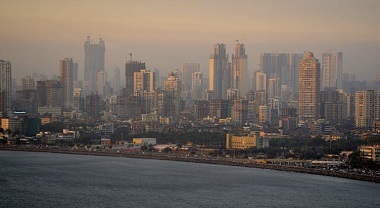An Analysis of the Status Quo of FDI And Its Regulatory Framework In India Through the RBI’s FED Master Direction No.11/2017-18 On Foreign Investment
The quarterly factsheet on foreign direct investment (FDI) on the website of Department for promotion of Industry and Internal Trade (DPIIT) shows that the amount of Foreign Direct Investment inflow for the period of October 2019 To March 2022 was $142.3 Billion, with Mauritius being the biggest contributor.[1] Also, a United Nations Conference on Trade and Development (UNCTAD) report from 2021 suggests that global FDI flows dropped by 35% to $1 trillion in 2020, from $1.5 trillion in 2019 due to the onset of the COVID – 19 pandemic. [2]
As we are well aware, FDI is a key driver of economic growth. It brings in financial resources for economic development, helps create jobs, transfer new technologies and enables a more competitive business environment. The percentage of FDI net inflows (% of GDP) was 2.4% in 2020.[3]
However, according to the World Investment Report 2022 published by the United Nations Conference on Trade and Development (UNCTAD), foreign direct investment (FDI) returned to pre-pandemic levels in 2021, reaching about $1.6 trillion, but this trend is unlikely to continue in 2022.[4]

Subsection 2A of Section 6 and Section 47 of the Foreign Exchange Management Act, 1999 (FEMA), read with the Foreign Exchange Management (Non-Debt Instruments) Rules, 2019, govern foreign investment in India (NDI Rules). In order to reflect changes in the regulatory framework, these regulations are periodically modified and published through gazette notifications.[5]
The Reserve Bank of India (RBI) is given authority to administer the NDI Rules under Rule 2(A), and in the course of doing so, the RBI may interpret and provide any directives, circulars, instructions, or clarifications that it deems necessary for the effective implementation of the rules’ provisions.[6]
Therefore, in accordance with Section 11 of the Foreign Exchange Management Act (FEMA), 1999, RBI provides directives to Authorised Persons. In order to execute the rules set forth, this Master Direction specifies the procedures that Authorized Persons must follow when conducting foreign exchange operations with their clients or constituents.
This article aims to analyse the status quo of FDI and its regulatory framework in India through the RBI’s FED Master Direction No.11/2017-18 on Foreign Investment.
ANALYSIS OF THE MASTER DIRECTIONS ISSUED BY RBI
PROHIBITED SECTOR AND PERSONS
Direction 3 provides for the persons and sectors outside India that are prohibited from investing in India. It includes –
- Lottery Business including Government/ private lottery, online lotteries.
- Gambling and betting including casinos.
- Chit funds
- Nidhi company
- Trading in Transferable Development Rights (TDRs).
- Real Estate Business or Construction of farm houses.
- Manufacturing of Cigars, cheroots, cigarillos and cigarettes, of tobacco or of tobacco substitutes.
- Activities/sectors not open to private sector investment viz., (i) Atomic energy and (ii) Railway operations
- Foreign technology collaboration in any form including licensing for franchise, trademark, brand name, management contract is also prohibited for lottery business and gambling and betting activities.
ROUTES THROUGH WHICH INDIA GETS FDI
ENTRY ROUTES
- Direction 5 provides for the entry routes through which foreign investment in the equity instruments of an Indian company can be made.
- Direction 5.1.1 states that automatic Route is the entry route in which investment by a person resident outside India does not require the prior approval from the Central Government.
- Direction 5.1.2 defines the Government Route as the entrance route in which investment by a person residing outside India requires prior clearance from the government. Foreign investment obtained through this method must meet the requirements specified by the government in its approval.
- Direction 5.1.4 states that aggregate foreign portfolio investment of up to 49 percent of the paid-up capital on a fully diluted basis, or the sectoral or statutory cap, whichever is lower, does not require Government permission or compliance with sectoral criteria, if such investment does not result in transfer of ownership and control of the resident Indian firm from resident Indian citizens or transfer of ownership or control to people other than resident Indian citizens. Other investments by a person resident outside India shall be subject to conditions of Government approval and compliance of sectoral conditions as laid down in Schedule I of the NDI Rules
SECTORAL CAPS
- Direction 5.2 provides for Sectoral caps. Unless otherwise stated, it is the maximum amount of permitted foreign investment in an Indian entity, including both direct and indirect foreign investment. Direct foreign investment is defined as foreign investment made on a repatriation basis by persons residing outside India in equity instruments of a company or the capital of an LLP, as the case may be.
- Direction 5.2.1 says that investment in the sectors/activities listed in Schedule I of the NDI Rules is authorized up to the limit specified for each sector/activity, subject to applicable laws/rules/regulations, security, and other conditions.
- Direction 5.2.2 specifies that the limit shown next to each sector is the sectoral limitation for the sectors/activities. The sectoral/statutory cap on foreign investment as a whole cannot be exceeded.
PERMITTED INVESTMENTS BY PERSONS RESIDENT OUTSIDE INDIA
- Annexure 1 of the master direction talks about the Purchase/ Sale of equity instruments of an Indian company by a person resident outside India, Annexure 2 provides directives about the Investments by Foreign Portfolio Investors.
- Annexure 3 provides direction about Investments by Non-Resident Indian (NRI) or Overseas Citizen of India (OCI) on repatriation basis. A Non-resident Indian (NRI) or an Overseas Citizen of India (OCI) is allowed to purchase or sell equity instruments of a listed Indian company on repatriation basis, on a recognized stock exchange in India, subject to some conditions laid down in Annexure 3.
- Annexure 4 provides directive on Investment by Non-Resident Indian (NRI) or Overseas Citizen of India (OCI) on Non-Repatriation basis. Non-resident Indians (NRIs) and Overseas Citizens of India (OCIs) are eligible to purchase/contribute to the following on a non-repatriation basis, including a business, trust, or partnership firm formed outside India and owned and managed by NRIs or OCIs.
- Annexure 5, 6,7,8,9 and 10 talks about Investment in a Limited Liability Partnership (LLP), Investment by a Foreign Venture Capital Investor (FVCI), investment by a person resident outside India in an Investment Vehicle, Investment in Depository receipts by a person resident outside India, Issue of Indian Depository Receipts (IDRs), Investment by other Non-resident Investors.
CONCLUSION
FDI is a significant source of funding for India’s economic growth. Following the crisis of 1991, India began its economic liberalization, and FDI has steadily increased since. India is a democracy that is focused on development and is open and transparent. It is crucial that like-minded developed countries provide a helping hand to the GOI in its attempts to fill holes in the domestic system and build on similarities that allow a free flow of investments to India. These nations include the United States and a few EU members (EU). The nation has the capacity and necessary resources to assist in reviving the faltering economy of the global community afflicted by the COVID-19 epidemic. It also has excellent growth possibilities. India will therefore develop into a new manufacturing hub and offer a different location for the world’s reorganized value chains to be headquartered if there is a strong and open FDI policy.
Author: Manish Kumar (intern), and Co-Author- Ajay Kacher- Legal Associate, in case of any queries please contact/write back to us at support@ipandlegalfilings.com or IP & Legal Filing.
References:
[1] DPIIT, Quaterly Fact Sheet, Foreign Direct Investment (FDI) Inflow, https://bit.ly/3zbvg6X, Accessed 14th July 2022.
[2]UNCTAD, Global foreign direct investment set to partially recover in 2021 but uncertainty remains, https://bit.ly/3uU3Tf5, Accessed 14th July 2022.
[3] The World Bank, https://bit.ly/2BpWhWD , Accessed 14th July 2022.
[4]UNCTAD, World Investment Report, https://bit.ly/3ObGD3g , Accessed 14th July 2022.
[5] Foreign Exchange Management Act, 1999 (FEMA), S. 6 and 47.
[6] The Foreign Exchange management (Non Debt Instrument) Rules, Rule 2(A)


